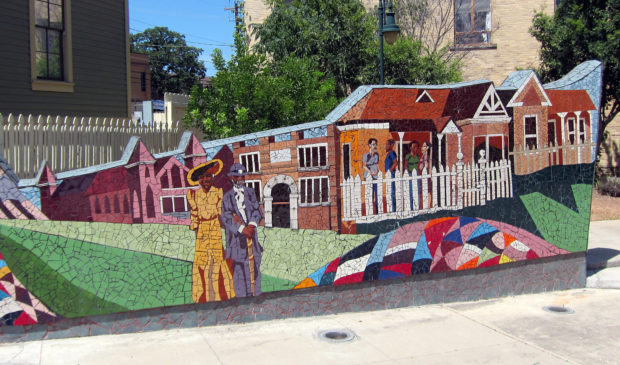Council considers gentrification and ‘right to return’ policy
Thursday, March 8, 2018 by
Jack Craver On Tuesday, City Council members got their first glimpse at a study they voted to authorize that examines gentrification in Austin.
The first phase of the study, conducted by three University of Texas professors, analyzed the demographic profile of nearly every census tract in the city. The analysis sought to highlight areas that have experienced significant gentrification as well as neighborhoods that are most likely to gentrify in the coming years.
For the most part, the study’s findings aligned with popular perceptions of what’s going on in the city, said professor Heather Way, who is the director of the Entrepreneurship and Community Development Clinic at UT Law School and helped lead the study.
Areas of the city south and east of downtown that used to have large populations of low-income and minority residents have experienced significant demographic change as a result of rising housing costs.
“Many of the neighborhoods in Central-East Austin are in the late stages of gentrification,” she said. “But it’s threading into neighborhoods farther away from downtown.”
In recent years, the subject of gentrification in Austin has largely focused on the major changes to neighborhoods just east of Interstate 35, such as the Holly, Chestnut, MLK and Montopolis neighborhoods. The study confirmed the perception that those areas have changed significantly as residents who are wealthier and whiter have moved in and lower-income and minority residents have moved out.
The study also showed, however, that between 2000 and 2016 significant demographic change occurred throughout a large swath of South-Central Austin, the area bordered by Lady Bird Lake to the north, State Highway 71 to the south, I-35 to the east and MoPac Expressway to the west.
The research also highlighted parts of the city where residents are the most vulnerable to displacement in the future. For the most part, those are neighborhoods on the outer edges of the urban core: east, north and south.
“Oftentimes where the gentrification is about to happen is ahead of where the political conversation may be,” said Council Member Greg Casar, whose district includes large portions of North-Central Austin located to the north of U.S. Highway 183.
Casar added that it was important for Council to not simply respond to gentrification taking place but to also anticipate the areas where it will come next so that it can try to prevent displacement.
He also suggested that examining policies that have prevented the construction of housing in wealthier parts of the city may help explain the effects of gentrification in poorer areas.
Council Member Delia Garza similarly noted that some parts of Central Austin have actually seen a population decrease in recent years.
In a clear contrast with Casar and Garza’s focus on building more housing, Council Member Alison Alter suggested that the researchers examine whether allowing certain types of development can lead to displacement.
“There are a lot of things we can do in zoning that can exacerbate this,” she said.
The study authors so far have not suggested any policies that could help people stay in their neighborhoods amid rising property values. They plan to develop a set of proposals and present them to Council in August, said Way.
Mayor Pro Tem Kathie Tovo has proposed establishing a “right to return” policy that would offer current or former residents of gentrifying areas preference for income-restricted housing. A resolution she authored asks city staff to examine how such a policy could be crafted and whether there are any legal barriers.
The resolution, which Council will take up Thursday, references a recently implemented policy in Portland, Oregon, which helps those who have been displaced or are at risk of displacement to pay for a down payment on a house. Currently, the city only has enough money to help 65 families, The Guardian reported, out of 1,100 who have applied.
The only skepticism of the resolution came from Garza, who took issue with the resolution’s focus on census tracts that are gentrifying.
“Why are we focusing on tracts as opposed to need?” she asked.
She also suggested that Council should not only focus on helping people return to areas that have been gentrified, but also on opening up housing opportunities for them in wealthy areas, to “promote economic integration.”
Tovo replied that her intention was not to “preclude looking at other areas,” but, “We absolutely want them to consider a policy that does look to those (gentrifying) census tracts.”
Photo by Wally Gobetz made available through a Creative Commons license.
The Austin Monitor’s work is made possible by donations from the community. Though our reporting covers donors from time to time, we are careful to keep business and editorial efforts separate while maintaining transparency. A complete list of donors is available here, and our code of ethics is explained here.
You're a community leader
And we’re honored you look to us for serious, in-depth news. You know a strong community needs local and dedicated watchdog reporting. We’re here for you and that won’t change. Now will you take the powerful next step and support our nonprofit news organization?



